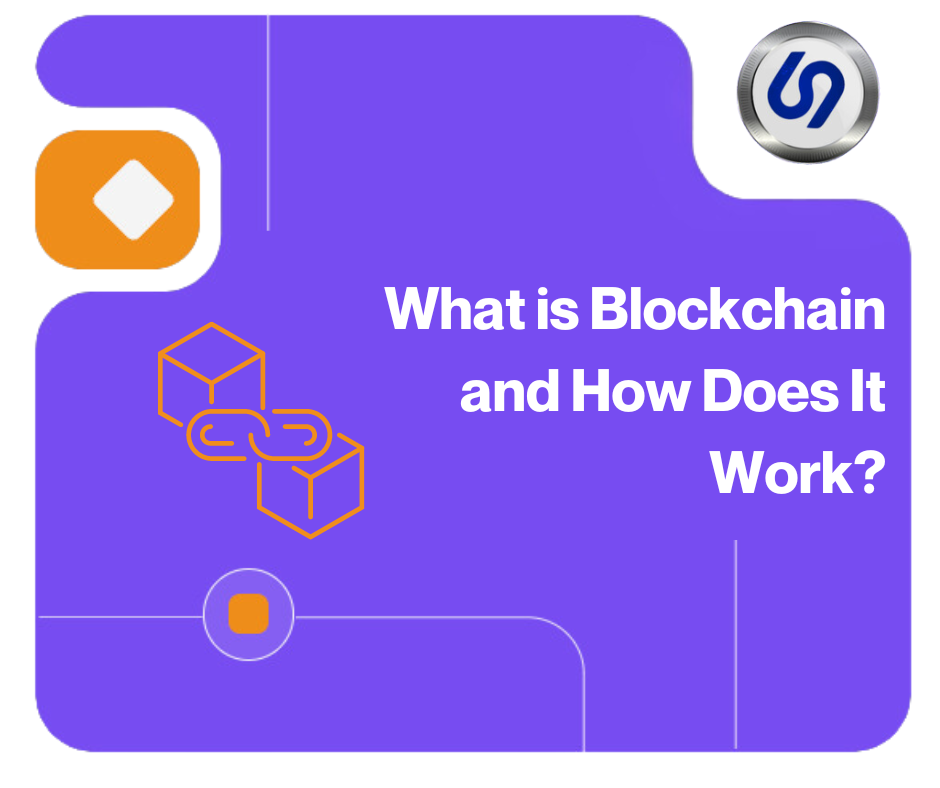
















 What is Blockchain and How Does It Work?
What is Blockchain and How Does It Work?
In the age of digital transformation, blockchain technology has emerged as a groundbreaking innovation, promising to revolutionize various industries. While often associated with cryptocurrencies like Bitcoin, blockchain's potential extends far beyond digital currencies. This blog will delve into what blockchain is, how it works, and why it has garnered so much attention across the globe.
Blockchain is a decentralized, distributed ledger technology that records transactions across multiple computers in a way that ensures security, transparency, and immutability. Unlike traditional centralized systems, where a single entity controls the database, blockchain distributes the ledger across a network of nodes (computers). Each node maintains a copy of the ledger, making it nearly impossible to alter past records without the consensus of the entire network.
At its core, blockchain technology operates through a series of interconnected blocks, each containing a list of transactions. Here’s a step-by-step breakdown of how it works:
Transaction Initiation: A blockchain transaction begins when someone requests a transaction. This could be anything from transferring cryptocurrency to recording a contract or sharing data.
Transaction Verification: Once a transaction is initiated, it is broadcasted to a network of peer-to-peer nodes. These nodes use complex algorithms to verify the transaction's validity. In the case of cryptocurrency transactions, this involves checking if the sender has enough balance to complete the transaction.
Block Creation: Verified transactions are grouped into a block. Each block contains a list of transactions, a timestamp, and a reference (hash) to the previous block in the chain, creating a chronological order.
Proof of Work: To add a block to the blockchain, miners (nodes) must solve a complex mathematical problem, known as Proof of Work (PoW). This process ensures that blocks are added at regular intervals and requires significant computational power, making the network secure against attacks.
Block Addition: Once a miner solves the PoW problem, the block is added to the blockchain. The updated ledger is then distributed across all nodes in the network, ensuring everyone has the same copy.
Transaction Completion: The transaction is complete once the block is added to the blockchain, and the recipient can access the transferred assets or information.
Blockchain technology boasts several unique features that set it apart from traditional databases:
Decentralization: Unlike centralized systems controlled by a single entity, blockchain is decentralized. This means no single party has control over the entire network, reducing the risk of corruption or fraud.
Transparency: All transactions on a blockchain are publicly recorded and visible to all participants. This transparency fosters trust among users, as anyone can verify the legitimacy of transactions.
Security: Blockchain employs cryptographic algorithms to secure transactions and data. Each block is linked to the previous one, making it extremely difficult to alter information without altering all subsequent blocks, which would require consensus from the majority of the network.
Immutability: Once a transaction is recorded on the blockchain, it cannot be altered or deleted. This immutability ensures the integrity of the data and provides a reliable historical record.
While blockchain is best known for underpinning cryptocurrencies like Bitcoin and Ethereum, its applications extend far beyond digital money:
Supply Chain Management: Blockchain can enhance transparency and traceability in supply chains, ensuring authenticity and reducing fraud.
Healthcare: Blockchain can securely store and share patient records, improving data integrity and accessibility while maintaining privacy.
Finance: Beyond cryptocurrencies, blockchain can streamline banking processes, reduce fraud, and facilitate cross-border payments.
Voting Systems: Blockchain can provide secure and transparent voting systems, reducing the risk of election fraud and increasing voter confidence.
Smart Contracts: These are self-executing contracts with the terms directly written into code. They automatically enforce and execute agreements when predefined conditions are met, eliminating the need for intermediaries.
Blockchain technology is a revolutionary innovation with the potential to transform numerous industries by providing a secure, transparent, and decentralized way to record transactions. Understanding its fundamentals is crucial for anyone looking to navigate the digital future. As blockchain continues to evolve, its applications will undoubtedly expand, offering new opportunities and solutions to age-old problems. Whether you're interested in cryptocurrencies, supply chain management, or secure voting systems, blockchain technology is worth exploring.
By staying informed and understanding the basics of blockchain, you'll be well-prepared to leverage its benefits and contribute to the ongoing digital transformation.